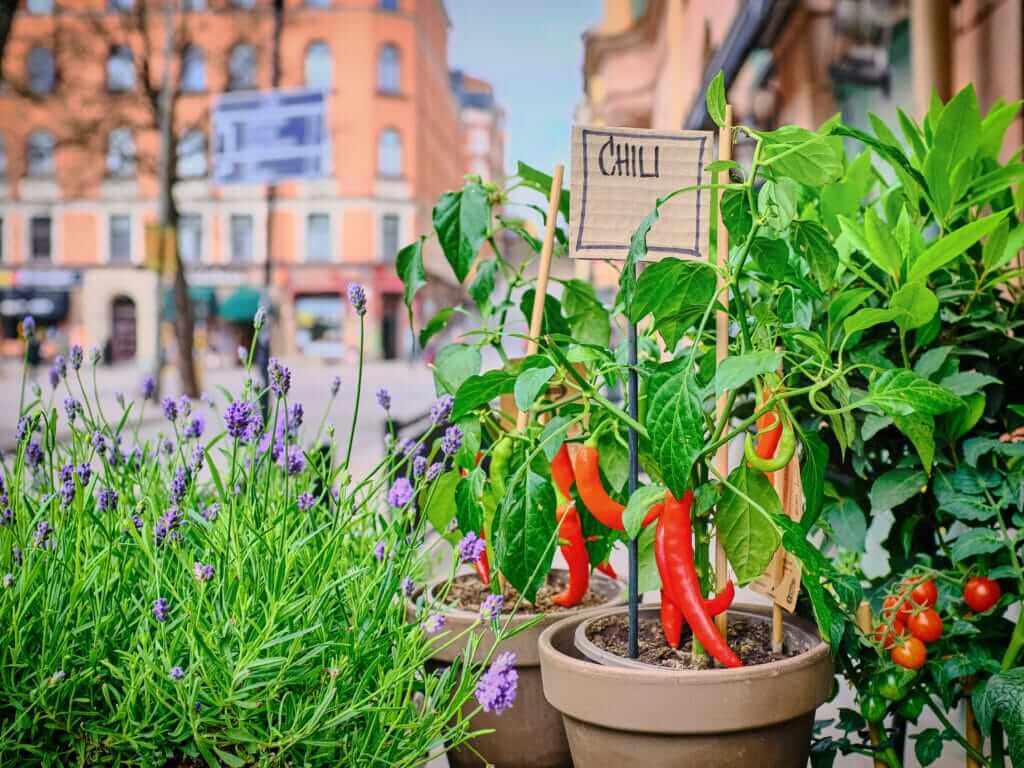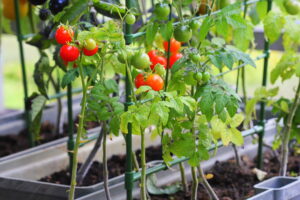Great Growing Ideas for A Small Vegetable Garden

Do you have a big green thumb but a small space? Fortunately, there are many ways you can make the most of your limited area and still enjoy the fruits (and veggies!) of your labor. Like growing in a large environment, there are many things to take into consideration to ensure a successful harvest. Use these growing ideas and considerations to help you plan your small vegetable garden.
Considerations for Your Small Vegetable Garden
Location
Location is one of the biggest considerations when planning your garden. Do you have space for a small raised bed? Are you limited to your patio? Or are you growing by a sunny window indoors? Before you even decide what you want to grow, you need to decide where you’ll grow it. There are a few things to take into consideration:
- Sunlight exposure. Even if you have space in your yard for a raised garden bed with the best soil, water, and nutrients, your plants won’t be able to thrive without sufficient sunlight. The same goes for your container gardens whether indoors or out. Narrow down your options of where you could grow based on sun exposure. For growing indoors, your best bet is choosing a south-facing window because this direction tends to get the most direct sunlight. Of course, homes and environments differ, so your best window might face a different direction.
- The space you have. Determine what size containers or garden beds can fit in your space before selecting your plants. Lettuce, for example, doesn’t need as much space or soil to grow as a tomato plant needs. So, if you can only fit a few tiny pots, you may have already narrowed down your list.
What you’ll plant
There are many options for plants that thrive in smaller environments. Some popular choices include:
- Herbs
- Tomatoes
- Peppers
- Eggplant
- Leafy greens
- Radishes
- Squash
- Cucumbers
- Peas
- Pole Beans
Some of your favorite fruits and veggies might not be suitable for your small vegetable garden, but that doesn’t mean you can’t find a variety that will work for your space. When shopping around for seeds or plants, look for words like patio, pixie, tiny, compact, baby, or dwarf. These varieties tend to work in small areas (though check the packaging for planting directions to make sure). The names might all mean small, but that doesn’t mean you won’t get a good harvest.
Container
While it might be tempting to pack in as many seeds or plants in one container when you don’t have a lot of space, your plants won’t be able to thrive if they are competing with one another for root space and sunlight. Plants and seeds often come with recommendations for spacing (how far apart to plant) and sometimes container size, so be sure to check the packaging. In addition, there are a few other considerations when choosing the right container:
- Drainage. When possible, you should choose pots that have drainage holes at the bottom or carefully add your own. Containers without proper drainage can allow water to sit at root-level, causing root rot.
- Size and shape. You can greatly stunt your plant’s growth by choosing a pot that’s too small for roots to thrive. Check the grower’s recommendations for certain plants to see how much space should be available. If you’re growing from seed, you have the option of starting in smaller containers and transplanting to larger ones as your plants’ grow.
Remember that you can grow up rather than out. Vining crops, like tomatoes and pole beans, can be trained to grow up instead of out and grow along support structures. Plus, there are some creative tiered container options to maximize your space.
Soil
You have two main options for the media you use to grow: soil and soilless. Poll avid gardeners, and you’ll find everyone has their own preferences.
Soil: A soil media includes naturally occurring soils and other additives. It’s one of the easiest and least expensive ways to grow, and it allows you to grow organically. While you’ll still enjoy the fruits of your labor, the yield isn’t always as robust as with soilless media mixes that include fertilizer and other substrates that support a healthy growing environment. Also, soil tends to put your plants at greater risk of pest, disease, mold, and fungus because of the non-sterile, organic elements.
Soilless media mix: As the name suggests, a soilless media doesn’t contain soil. Instead, it’s a combination of organic and inorganic materials like perlite, vermiculite, peat moss, coco coir, bark, coarse sand, and fertilizers. This unique combination helps support many needs of your plants, so many people find they have a greater yield when using a soilless media mix instead of soil. Plus, there is a lower threat of organisms when you use inorganic media like perlite, vermiculite, or diatomaceous earth.
Timing
You may only have a few containers, but you don’t have to be limited by how much you grow. If you choose certain crops, you can use succession planting: reseeding quick-growing crops every few weeks during the growing seasons. Beans, zucchini, and lettuce are great choices for this method of growing because the individual plants tend to exhaust themselves during the growing season. Plus, you can then harvest all season long instead of all at once.
Achieve Huge Success in Your Small Vegetable Garden with Harvest Hero Enhanced Perlite Mix
Harvest Hero Enhanced Perlite Mix is a nutrient-rich soilless amendment and growing medium that is a 3-in-1 blend comprised of perlite, diatomaceous earth, and essential nutrients. This patent-pending mix has been designed by Harvest Hero’s team of engineers and agronomists to improve soil structure for nutrition which promotes bigger plants and bigger yields. Harvest Hero Enhanced Perlite Mix will meet your plants’ needs throughout the first critical 6 weeks of growth by improving soil quality, providing plant nutrients, and amending soil properties to make it easier for the plant to absorb and translocate essential plant nutrients to the root system.
Consisting of domestically sourced perlite, diatomaceous earth, and essential nutrients, Harvest Hero’s 3-in-1 Enhanced Perlite Mix is unlike anything on the market. Try it today and see the difference a Hero makes in your small vegetable garden! Shop now for FREE SHIPPING on all available product sizes of 8 quart through 3 cubic foot bags.



